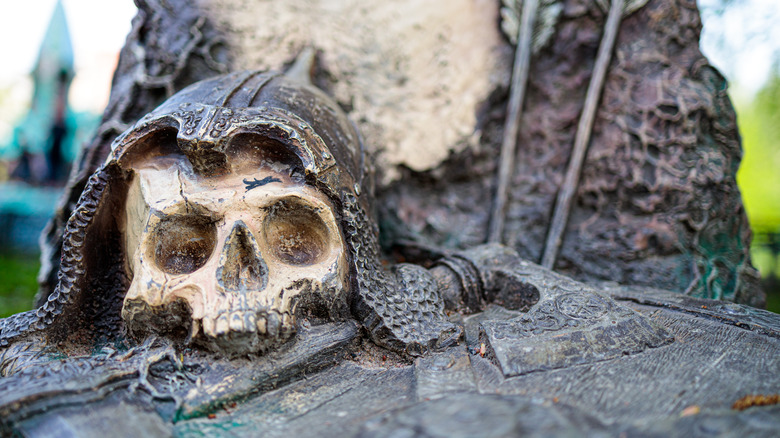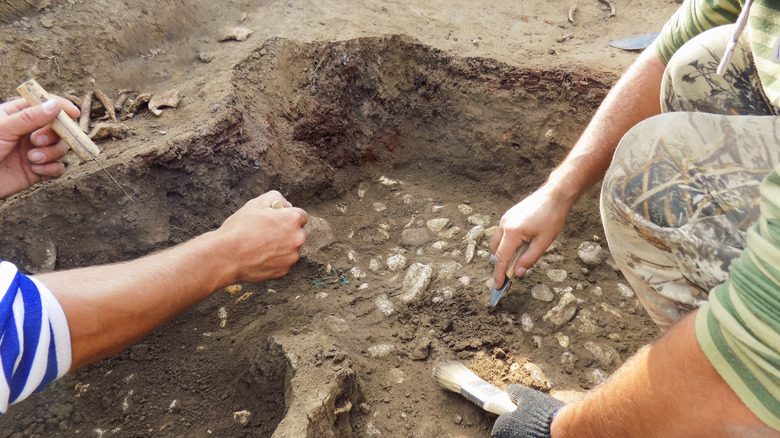The Mystery Of This Medieval Warrior Burial
The nearly thousand-year-old skeleton of a Finnish warrior has puzzled historians since it was unearthed back in 1968. The grave contained brooches, rabbit hair, feathers, and jewelry, all suggesting that its occupant was a wealthy, notable female (via Vintage News). Yet there were also two swords within the grave, indicating the deceased wielded weapons in their lifetime which was a role solely reserved for men at the time. While some historians suggested it was a double burial, newly procured DNA evidence reveals something much more intriguing.
DNA evidence found that the ancient skeleton was anatomically male with Klinefelter syndrome, a gene that causes reduced testosterone. While symptoms vary, the warrior might have had less muscle mass and body hair than the average man, with larger breast tissue. Given the presence of male and female symbolic objects they were buried with, it's possible that this centuries-old warrior may have identified as non-binary, and given the respectful burial, they were accepted by the community.
The burial changes how we consider Medieval society
It is impossible to confirm the warrior's gender identity or even the Klinefelter diagnosis, as only a small sample of gene sequences could be studied, the hypothesis holds up to scrutiny. Even with limited data, the findings strongly point toward the XXY chromosome that defines Klinefelter Syndrome, and even though most modern-day people with Klinefelter identify as male, the presence of swords and jewelry within the same burial site points to a person who was seen as between genders (via Smithsonian Magazine). This challenges the hyper-masculinity associated with Medieval Scandinavians.
It's possible that the mysterious skeleton belonged to a shaman, who lived outside of social norms. Magic was seen as a feminine art, exemplified in Norse mythology when Odin takes a female form to perform a spell. What is certain is this was a well-known, wealthy member of society given the quality of the burial goods. Was this person of high birth, thus accepted as they were due to familial connections, or was Medieval society more nuanced than we currently give it credit for? As of now, we can only speculate, but who knows what other skeletons are providing answers to mysteries just six feet below.

